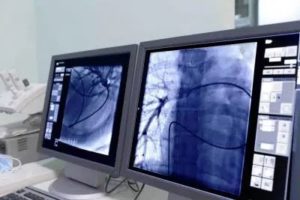Imaging is not the contributing factor for the increased Medicare expenses between 2009 and 2019, despite contrary claims, according to the latest analysis that was published in September 2021.
Total healthcare expenditures in the USA hit $3.8 trillion in 2019, representing a four times rise in the share of the sector’s GDP (gross domestic product) since 1960. As a result, it compelled efforts to decrease expenditure, with radiology being the main target, as noted by the experts of University Hospitals Cleveland.
Nevertheless, the specialty also recorded a negative compounded annual rate of growth when compared to other Medicare categories in Part B during the period of 10 years. Imaging only accounted for 8% of expenditure in Part B, 1.4% of Medicare outlays, and just 0.05% of national healthcare expenses, researchers elaborated in the Current Problems in Diagnostic Radiology.

Keval Parikh, MD, University Hospital Department of Radiology, with colleagues wrote, “These findings are contradictory statements highlighting physicians’ services as well as imaging as significant contributors to the growth of expenses and the other disproportional amount America spends only in healthcare compared to many other countries.” The corresponding author and colleagues also wrote, “Further investigation of all the other components of the national healthcare expenditures besides Part B, like facility fees and out-of-pocket expenses, may also help in clarifying the overall contribution of imaging in NHE.”
During this 10-year research period, payment per service under Part B has declined at a 1.4% compound growth rate annually. Imaging recorded a massive drop at 3.5% among the rest of the categories. Within this segment, nuclear medicine witnessed the greatest drop at 7.4%, MRI/MR angiography at -5.8%, CT/CT at -3.5%, and USG at -3.3%. Likewise, plain film X-ray experienced a positive rate of growth at 0.4%. In total, 5.1 billion services were paid for only in 2019, whereas imaging represented approximately 8% of the volume. CAGR for services remained at 2.1%, and imaging recorded steady growth at 0.5%. Part B expenses totaled $115.6 billion in 2019, with a moderate rate of growth at 0.6%. This was mainly driven by factors like drugs (at 5.9%) and other procedures (at 0.9%), while imaging dropped by 3%.
Despite the figures, the federal government also targeted imaging expenses for cuts on multiple occasions. Parikh and the team sounded concerned about the overall impact of consistent pressure on the pricing of medical imaging.
The authors also stated, “If controlled pricing leads to reduced reimbursements, taking them to unfair and unsustainable levels, it could cause unintended results like physician and service shortages, quality deterioration, rationing, additional fees creation to patients with rising out-of-pocket expenses. In fact, evidence shows that patients commonly pay a coinsurance while undergoing any advanced imaging, both within and out of their network. This might be an early sign of unintended consequences of fees reduction beyond the point of equilibrium for suppliers of those imaging services.”
Imaging is vital for medical diagnosis. Understanding the importance of faultless and accurate imaging, sepStream® the most advanced software solution, is here to help you with all your requirements. Our efficient team handles imaging software solutions daily to give you impeccable results without fail.